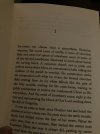Synaesthesia (rhetorical device) - Wikipedia
I came across a comment below a YouTube article a while back which mentioned this as being potentially effective, and since I don't think I've ever seen it mentioned on here, I thought I'd share the idea. Basically this is to describe something that belongs to one sense by using terms that belong to other senses, often in similes. This, the comment claimed, and I agree, can makes the description stronger.
Some examples are so time-worn we barely seem them as synaesthesia: "The cry pierced her heart" describes sound in terms of touch.
"Its green soothed him like the hush of waves on a beach": visual in terms of sound.
One I used myself recently after thinking about this: "The song of the blackbird stitched like a silver needle through the dull hum of traffic from the bypass": sound in terms of visual (silver) and touch (needle, implying piercing).
Worth considering, I think, if you want a particular description to make an impact. Anyone got any good examples?


